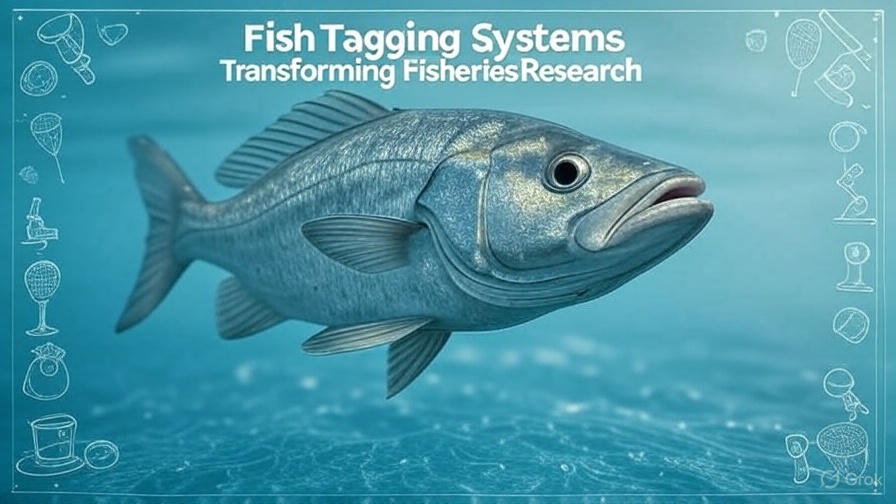Accurate, real-time insights into fish behavior and migration used to feel like a distant dream. Today, thanks to advanced fish tagging systems, researchers around the world are unlocking critical data that’s reshaping management, conservation, and our relationship with the oceans.
1. Acoustic Telemetry and the Ocean Tracking Network (OTN), Canada
At the forefront of marine tracking technology, the Ocean Tracking Network (OTN)—based at Dalhousie University—leverages acoustic transmitters to monitor fish migration globally. This fish tagging system has revolutionized our understanding of migration corridors, habitat use, and population connectivity across vast distances.
In southeast Florida, researchers tagged lemon sharks with acoustic transmitters linked to hydrophone arrays as part of collaborative networks like FACT and OTN. This system offered unprecedented visibility into shark movement and habitat utilization patterns.
2. Coded Wire Tagging in the Pacific Northwest
Ever heard of a fish tagging system so prolific it’s labeled “the largest animal tagging program in history”? That’s the power of Coded Wire Tags (CWTs). Over a billion salmon have been tagged in the Pacific Northwest, using microscopic wires placed in their snouts, providing batch-level or individual codes when recovered.
This system allows detailed tracking of release and recapture data—such as hatch dates, species types, and release locations—critically informing management strategies for salmon conservation and hatchery evaluation.
3. FishNet Citizen Science PIT Network in Australia
In Australia’s Murray–Darling Basin, fisheries researchers have employed a robust fish tagging system using PIT (Passive Integrated Transponder) tags embedded under the fish’s skin. Across the basin, detectors relay movement data to a cloud database called FishNet, offering real-time updates on fish movement patterns.
With over 40,000 fish tagged, this large-scale program enhances river management decisions through citizen science partnerships—forming an integrative model for ecosystem restoration and public involvement.
4. Tagging of Pacific Predators (TOPP) – A Model for Marine Mega-Tracking
The Tagging of Pacific Predators (TOPP) project, under the Census of Marine Life, deployed both satellite and archival tags on 22 species, including sharks, seals, turtles, and whales—covering thousands of miles of open ocean and unknown habitats.
This tagging system revealed migratory routes, ecosystem interactions, and spawning grounds—data previously out of human reach—and significantly enhanced conservation policy frameworks worldwide.
5. Misión Tiburón in Costa Rica – Protecting Juvenile Hammerheads
Costa Rica’s groundbreaking fish tagging system initiative, “Misión Tiburón,” combined satellite and acoustic tracking to document that scalloped hammerheads migrate over 300 miles to nurseries along Golfo Dulce. This insight directly led to the creation of the world’s first sanctuary focused on protecting juvenile sharks—marking a monumental fisheries conservation win.
6. Kingfish Tag-Recapture Programs in Australasia
Australia and New Zealand have long-running cooperative fish tagging systems, relying on recreational anglers to tag and release kingfish with unique streamer tags. Over decades, more than 500,000 tags were deployed across both countries, generating rich data on stock structure and migration.
This partnership underscores the value of community engagement in large-scale fisheries research.
7. Improving Tag Reliability: Standardized PIT Tag Testing in the Columbia River Basin
In the Columbia River Basin, researchers rigorously evaluated multiple PIT tag models, including Voda IQ series, under standardized protocols. They assessed metrics like detection range, durability, and size—critical parameters for reliable long-term data collection.
This attention to quality ensures that the fish tagging system delivers accurate survival and migration data—vital for policy decisions tied to species protection under regulations like the Endangered Species Act.
Why These Global Fish Tagging Systems Matter
Across continents and ecosystems, these case studies demonstrate how the fish tagging system:
- Uncovers hidden life patterns—revealing migration, spawning, and survival behaviors critical for fisheries management.
- Supports conservation actions—like establishing marine sanctuaries or adjusting fishing seasons.
- Empowers policymaking—by providing concrete, real-time data that inform regulations, quotas, and sustainable practices.
- Engages communities—increasing citizen involvement and awareness, key for long-term success.
Advantages and Modern Innovations
Together, these systems illustrate major strengths:
- Scalability: From individual sharks to entire fish populations, tagging systems scale effectively.
- Adaptability: They adapt across species—from pelagic sharks and salmon to coastal fish and hammerheads.
- Data Richness: Whether via acoustic arrays, satellite uploads, or community reports, the data informs fish health, biodiversity, and human impact.
- Cross-Border Collaboration: Tagging data often spans jurisdictions, encouraging global conservation cooperation.
Final Thoughts: Embracing the Tagging Revolution
Every fish tagging system featured in these case studies represents a leap forward in how we study, manage, and ultimately protect our marine and freshwater ecosystems. From community-driven PIT networks to global satellite-tag programs, these tools reveal the ocean’s secrets—and empower us to use them wisely.
As you reflect on these success stories, consider: how might your region benefit from such a fish tagging system? Whether through local partnerships, conservation funding, or tech integration, the potential to positively impact fisheries is vast.

